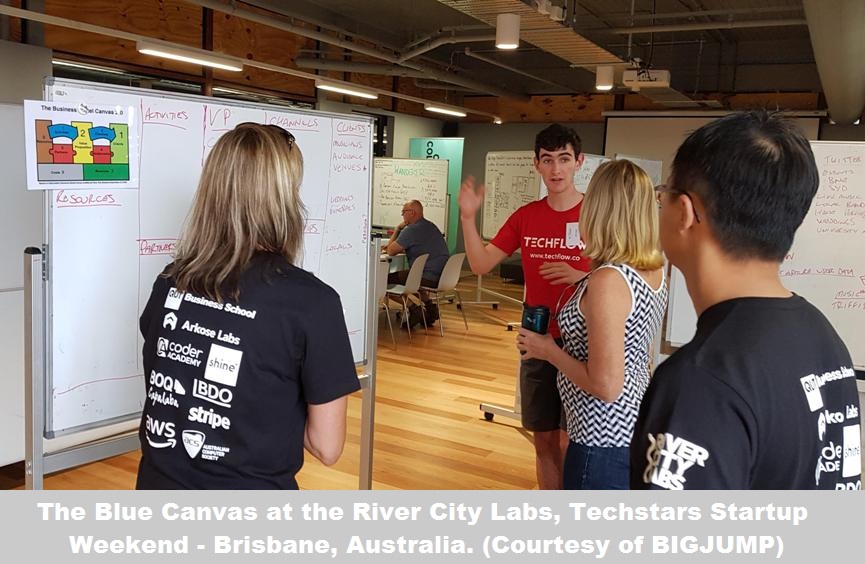
You reached Flavio's blog on business model exploration.
The solution could be
just one call away.
When I approach an MVP for industrial SMBs, Saas Startups and B2B Corporate labs,
there are three things I try to accomplish:
You can make it using a bit of Blue Ocean Strategy methodology on top of the Minimum Viable Product approach.
There is a missed piece of information into the Lean Startup methodology when it comes to defining the MVP (Minimum Viable Product).(1)
Unfortunatelly it's the one that will make a difference in putting you directly into experimenting fierce competition, or opening up a new market and become a unicorn.

The Lean Startup has made a great job in letting us understand that an MVP is characterized by just the key features that are necessary to help a Customer make his "job to be done" (2)
This picture (3) makes wonders in explaining this core concept:
You must select the features to be included in your MVP so that the MVP in its simplest form is anyhow capable to "deliver" the job to be done.

Reducing the features of the MVP to the key ones, it's more an art than a science. For this reason I find this sequence of Picasso's drawings particularly inspiring:
It's incredible to see how the bull image has been reduced to it's essential lines (8.5 lines, to be precise).
What this sequence teaches to me is that Picasso, at a certain point of his "strip down", decided to eliminate the bull's head.
It's a damn bold move.
This sequence of drawings teaches us to be bold in eliminating unnecessary features from our MVP.
Being able to reduce down to the minimum the MVP's attributes is not enough to help us in designing a solution capable to sell.
Till here we have only defined the features that enable our MVP to deliver the Job to be done.
But we have not made any effort to open a new market and to beat, or avoid, competition.
The Lean Startup methodology is a bit concentrated on making something really innovative, with the underlying assumption that the customer will love us (or not - in that case: "Pivot"), no matter what.
The reality is that we are not always inventing something really innovative ( whatever it is, it will have to beat the status quo, the alternative spending options and the copy-cat competitors ).
The real point is therefore:
To do this, we cannot just assemble the MVP key features. We have to choose a set of features that will be appealing into a Blue Ocean of untapped Clients.
How to do so, is well described into the Blue Ocean Theory, so I will not tediate you with the details.
Just let me point you in the right direction through this chart, taken from a public presentation of Mr Kim and Ms Mauborgne:
You must also be sure that it comprises features capable to target a new - untapped market.
You do this, re-thinking the features in a strategic way. Considering to position your solution to offer something that your customers are not used to get, packed into the product category your solution is going to cover.
Here is how Mr. Kim and Ms Mauborgne tell us to do:
Using this 4 actions framework will guide you in positioning (4) your MVP not only to do "what your customer wants" but also doing this for a customer segments that reshapes the product category you have identified as a solution.

The Blue Canvas at The BigJump Business Modeling workshop
Brisbane - Australia
Launching a new product or service can easely become a mess:
Having a coach, bringing you down to a clear roadmap, equipped with the right models and tools, can avoid wasting money, time and a lot of energy that can be used to reach your market and sell now.
If this sounds familiar and it is a problem,
check if our workshop can be of help:
